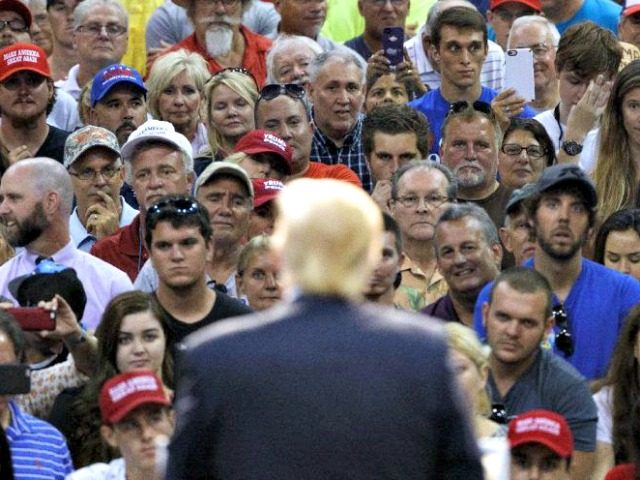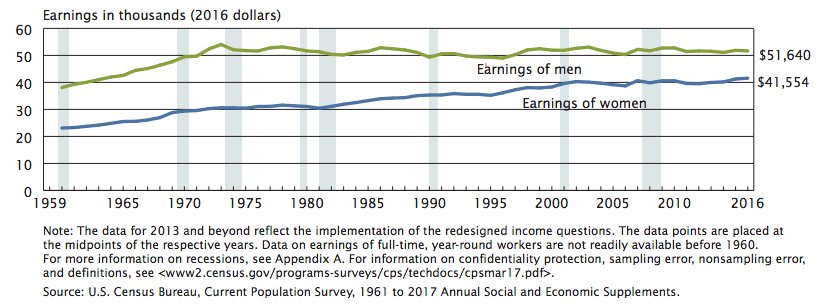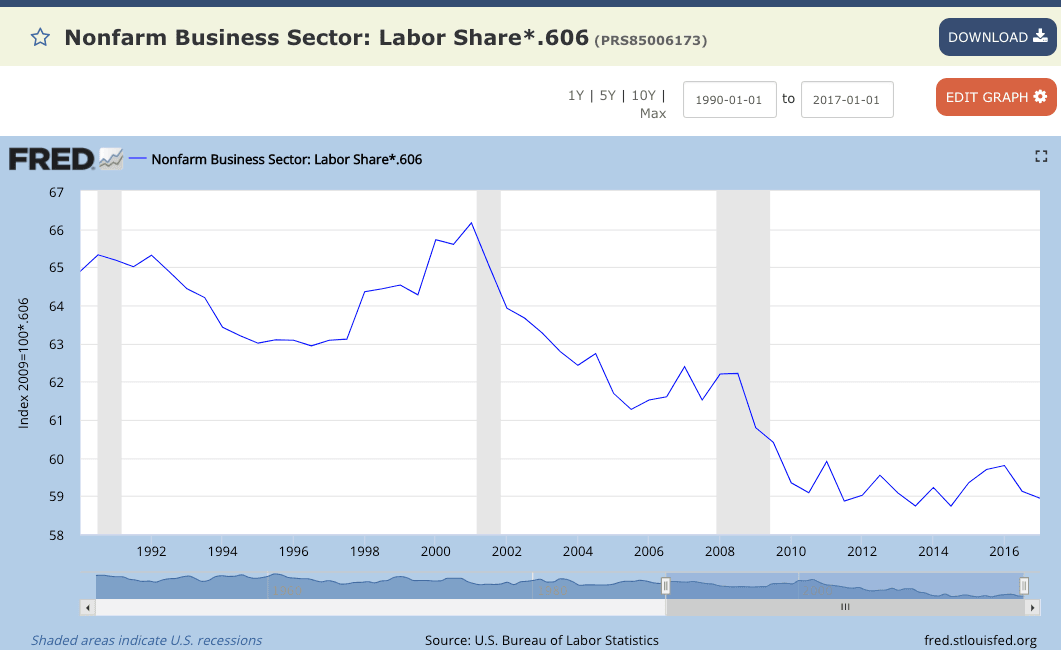A near-final draft of the White House’s unlimited and forever amnesty bill says the administration wants $25 billion for a wall over the next five years, and will not cancel chain-migration or visa-lottery inflows until the last of the 4 million foreigners now in the pipeline have arrived in the 2030s.
The amnesty is dubbed the Security, Enforcement, and Compassion United Reform Effort Act, or SECURE Act. It is based on the SUCCEED Act developed by Sen. Thom Tillis and Sen. James Lankford, and it offers amnesty to an unlimited number of people, without any ending date.
Overall, the amnesty bill implements the desire of American business for a huge, managed supply of young, compliant, non-criminal workers, who also double as consumers. That is very different from progressives’ desire to welcome poor ‘dreamer’ migrants from developing countries, regardless of costs. For example, the bill includes a series of legal reforms intended to exclude the unregulated migration of uneducated and unskilled Latin-American migrants and youths, including MS-13 gangsters. Those migrants are of little use to employers but are usually the beneficiaries of Democrats’ sympathies for distant peoples.
The Trump amnesty bill was provided to Breitbart News by someone close to the negotiations. It is expected to be released to the public on Monday or Tuesday, perhaps by Trump’s congressional outreach aide, Marc Short. He is a former top aide to the pro-amnesty Koch brothers.
The 250-page draft received by Breitbart News matches the one-page description released this week by White House officials.
The Trump amnesty bill requires $25 billion be set aside from 2018 to 2021 for “tactical infrastructure,” which is a code-word for a wall. But the funds can also be used to buy electronics sensors or even aircraft – giving many politicians an huge incentive to convert construction funding into contracts for hometown aircraft and electronics companies. The legislation does not condition the amnesty on the completion or even the start of wall-construction.
In fact, Democrats who say they will vote for the amnesty and wall also suggest they will try to block subsequent construction of the wall. For example, Democratic leader Sen. Chuck Schumer told the New York Times January 24 that:
It is frankly my belief that it is going to be next to impossible for them to actually build the wall. And I told this to the president. I said, ‘Secretary Zinke, you know his Secretary of the Interior, said ‘I don’t know where you build the wall along the Rio Grande because you can’t build it on the Mexican side.’ They won’t build it. If you build it on the America side, it cuts us off from the river. You can’t build it in the middle of the river. So my view was they would have a very difficult time actually getting it built.
If the wall works fully, it should exclude roughly 200,000 possible migrants per year. At that rate, it will take nine years to offset the inflow allowed by the accompanying amnesty for at least 1.8 million illegals.
The bill technically ends the visa lottery and chain-migration programs which allow diverse immigrants to bring in their extended-family clans of siblings, parents and older children. But the end is delayed until all 4 million people in the pipeline — such as the elderly parents and devout siblings of visa-lottery winners from Pakistan — settle in the United States. The pipeline also includes hundreds of thousands of white-collar professionals.
By welcoming everyone in the pipeline, the bill does not give working Americans even partial relief from the salary impact of mass immigration for 15 years or more.
The continued inflow of 4 million chain-migrants — who will be mixed in with the inflow of one million new legal immigrants per year — ensures continued competitive pressure on Americans’ wages. It also ensures continued high rental prices for urban property, and minimal incentive for investors to hire people in low-migration areas, such as Maine, South Dakota, or Oklahoma. It also allows employers and real-estate owners another 15 years to lobby Congress for alternative expansions in immigration to ensure there is no immigration reduction in 2035.
In fact, Short’s amnesty bill may abort pending wage raises due before GOP politicians face the voters in November, especially in low-unemployment states, such as Minnesota or Virginia. Currently, many employers are offering one-time bonuses to keep their employees at work but will have to start offering permanent raises if they give up hope for a new wave of immigrant labor.
Widespread pay raises in 2018 could be a strategic disaster for business groups because they would decisively show the public how mass immigration has cut their wages, despite many denials by business-funded economists.
The amnesty section requires Americans to grant the hugely valuable gift of citizenship to nearly all current illegals who have documents saying they are younger than 37. The language offers amnesty to all illegals who say they were younger than 16 when they entered the country before June 2012, and who also were younger than 31 on June 15, 2012.
The legislation directs the Secretary of the Department of Homeland Security to operate the amnesty and includes some measures to help screen out fraudulent applicants for the amnesty.
For example, the bill includes a grant of $400 million for a formal bureaucratic process, it curbs judicial intervention, excludes people identified as two-time drunk drivers or criminals, and allows bureaucrats to share application data with anti-fraud investigators. None of those commonsense measures are included in the Democrats’ DREAM Act amnesty, which has been endorsed by GOP Sen. Cory Gardner.
But the bill sets no upper limit on Trump’s amnesty, and it does not provide any incentives for officials to fight fraud or minimize the scale. In fact, the pro-business incentives in Washington — such as the hope of future jobs lobbying with the U.S. Chamber of Commerce– will encourage top agency officials to grow the amnesty far beyond the claimed size of 1.8 million. The bill does not even set an upper limit on applicants or a cut-off date.
The upper limits were removed from the amnesty when Trump and his deputies expanded the amnesty beyond the 800,000 people who ever registered for the DACA amnesty.
That lack of any upper limit means the political appointee who runs the DHS will have the power to exceed the reported estimate of 1.8 million illegals by simply directing officials to accept more applications. The bill does not prevent the DHS secretary from approving 4 million illegals, 5 million illegals or 6 million illegals.
The cost of the amnesty is not mentioned in the legislation, although the Congressional Budget Office optimistically estimated that a similar DREAM Act amnesty for 2 million illegals would cost taxpayers $26 billion in just the first ten years. The costs would be high because very few of the illegals have college degrees, many do not speak English, and so cannot earn enough to pay more taxes than they receive in benefits.
But the taxpayers’ costs also act as a $26 billion stimulus for business which will provide the migrants with medical services, apartments, entertainment, food, and transport. The continued inflow of the 4 million chain-migrants, however, is a vastly greater benefit for business and burden for American workers.
The existing population of illegals in the United States is estimated at 12 million, but it may be higher, and it is growing every day as migrants head north in the hope of buying documents and applying for the amnesty.
Trump’s amnesty begins immediately, even before wall construction begins. That benefits-first approach matches the 1986 amnesty, which has made California into a Democratic stronghold. If many migrants rationally decide to rush themselves and their young children over the border during 2018, the GOP’s November election chances will be reduced to zero, and Trump’s chance of impeachment rises sharply.
Moreover, the bill handcuffs DHS agents from deporting any younger illegals until the illegals file for the amnesty. That provision means the DHS agents cannot deport young illegals — even if they have just climbed over the border fence — until the DHS secretary can start accepting applications.
But the business community will have little reason to defend Trump, partly because they have gotten their double-shot of tax cuts and cheap labor. In fact, the legislation does not sunset the amnesty, meaning it can be quietly expanded with a few legal tweaks that can be attached to any of the myriad obscure bills annually passed by Congress.
In 1986, Congress expected that 400,000 farm workers would apply for green cards –but officials eventually handed out 1 million green cards. If the same pattern applies to the estimated 1.8 million recipients, Trump’s amnesty will be given to 4.5 million illegals — or more than one year of births in the United States.
The Migration Policy Institute estimates the current resident population of ‘dreamer’ illegals to be 3.25 million — not counting younger, more recent child-illegals who will age in and drive the total closer to 4.5 million.
That bigger-than-expected total would be a disaster for the GOP but a boon for business because it will head off the labor shortages which allow Americans to get higher wages. In turn, the lower wages will be a financial payoff to investors and Wall Street that will complement their gains from the December tax cut.
The legislation says illegals must meet several tests, such as steady work and validated education levels. But the education standards are extremely low, suggesting that nearly all illegals will meet the test. For example, illegals can meet the education requirements by simply seeking a “general education development certificate recognized under state law.” This is California’s current English-language test.
Illegals will be allowed to become citizens after 12 years, giving Democrats a huge electoral boost in the 2030s when nearly all of today’s GOP legislators have retired. If 4.5 million illegals get the amnesty, it will provide Democrats with roughly 750,000 possible new voters in Texas and 250,000 possible voters in Florida in 2030.
Even without citizenship, the population of several million legalized illegals will provide an immediate gain for Democratic Party, partly because they will be counted in the 2020 census and will shift a few more House seats from GOP-dominated areas into Democratic-dominated areas. More importantly, the amnestied migrants will give the Democrats complete confidence of their future political dominance — and the confidence to reject any compromises in debates with the GOP.
The draft amnesty will also serve as complete proof in November that Trump’s voters’ wrongly placed their trust in his August 2016 promise to block any amnesty:
He said:
For those here illegally today who are seeking legal status, they will have one route and one route only. To return home and apply for re-entry like everybody else under the rules of the new legal immigration system that I have outlined today …
It’s our right as a sovereign nation to choose immigrants that we think are the likeliest to thrive and flourish and love us …
Anyone who tells you the core issue is the needs of those living here illegally has simply spent too much time in Washington.
Four million Americans turn 18 each year and begin looking for good jobs in the free market.
But the federal government inflates the supply of new labor by annually accepting roughly 1.1 million new legal immigrants (including roughly 750,000 working-age migrants), by providing work-permits to roughly 3 million resident foreigners, and by doing little to block the employment of roughly 8 million illegal immigrants.
The Washington-imposed economic policy of economic growth via mass-immigration floods the market with foreign labor, spikes profits and Wall Street values by cutting salaries for manual and skilled labor offered by blue-collar and white-collar employees. It also drives up real estate prices, widens wealth-gaps, reduces high-tech investment, increases state and local tax burdens, hurts kids’ schools and college education, pushes Americans away from high-tech careers, and sidelines at least 5 million marginalized Americans and their families, including many who are now struggling with opioid addictions.
The cheap-labor policy has also reduced investment and job creation in many interior states because the coastal cities have a surplus of imported labor. For example, almost 27 percent of zip codes in Missouri had fewer jobs or businesses in 2015 than in 2000, according to a new report by the Economic Innovation Group. In Kansas, almost 29 percent of zip codes had fewer jobs and businesses in 2015 compared to 2000, which was a two-decade period of massive cheap-labor immigration.
Because of the successful cheap-labor strategy, wages for men have remained flat since 1973, and a large percentage of the nation’s annual income has shifted to investors and away from employees.



COMMENTS
Please let us know if you're having issues with commenting.